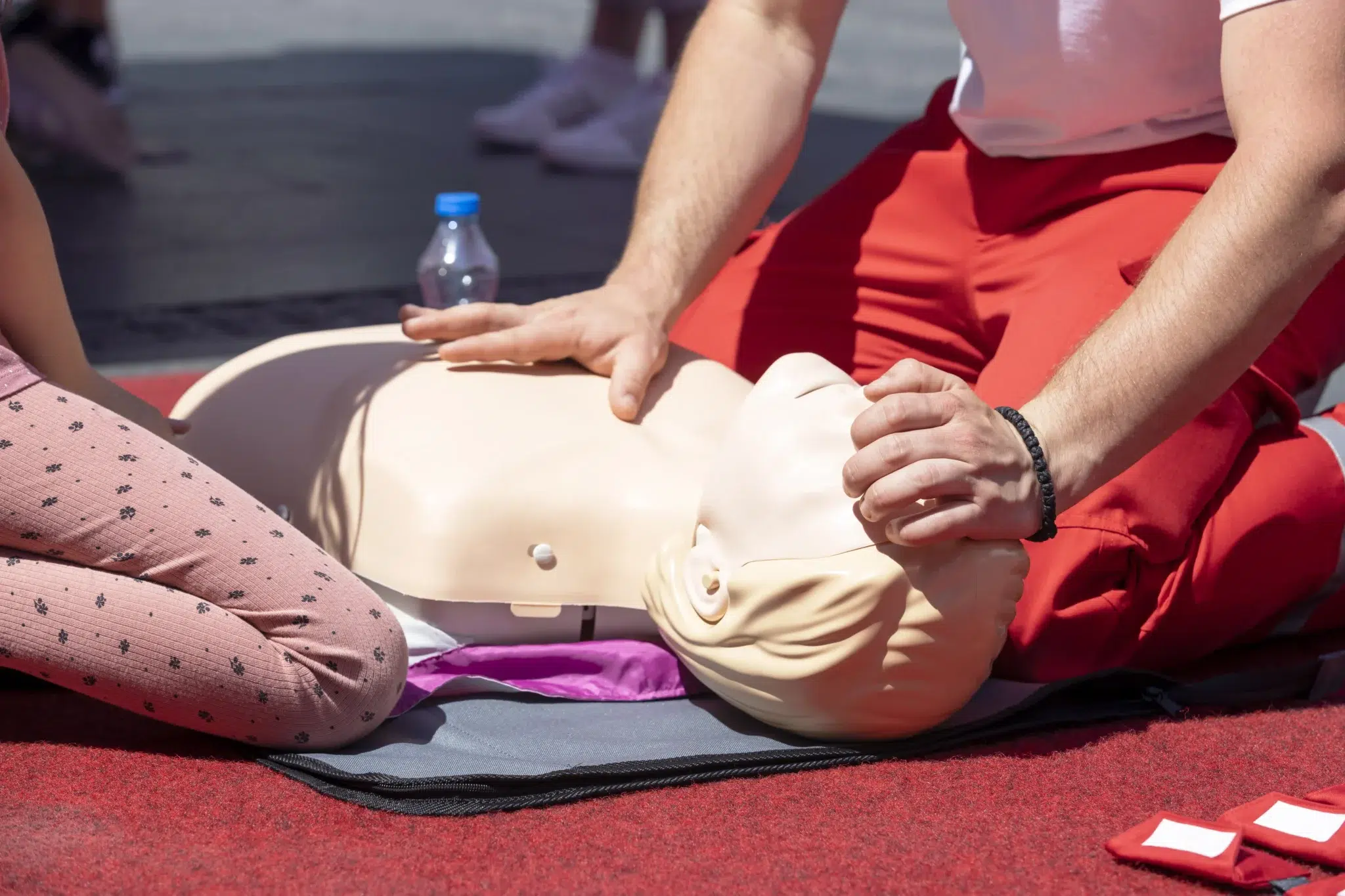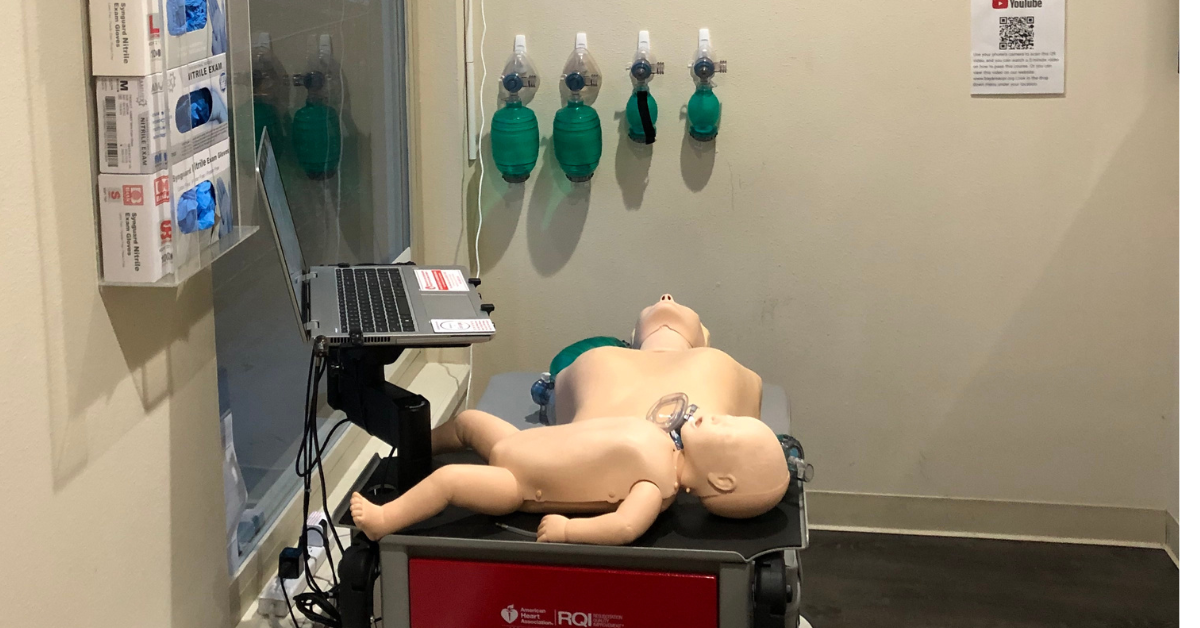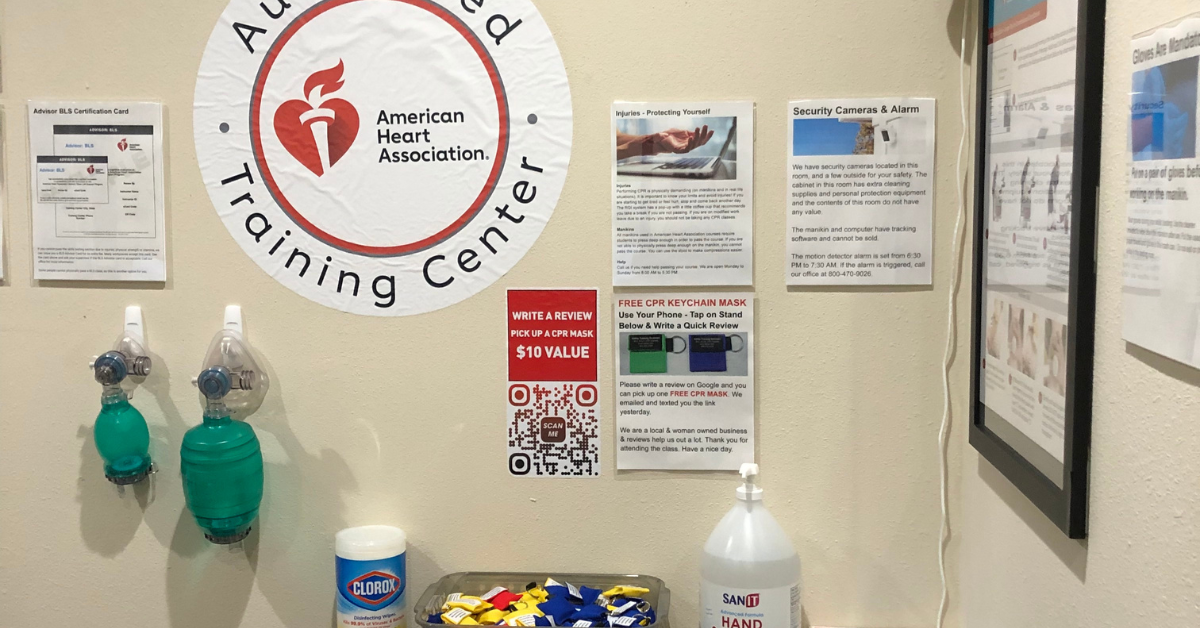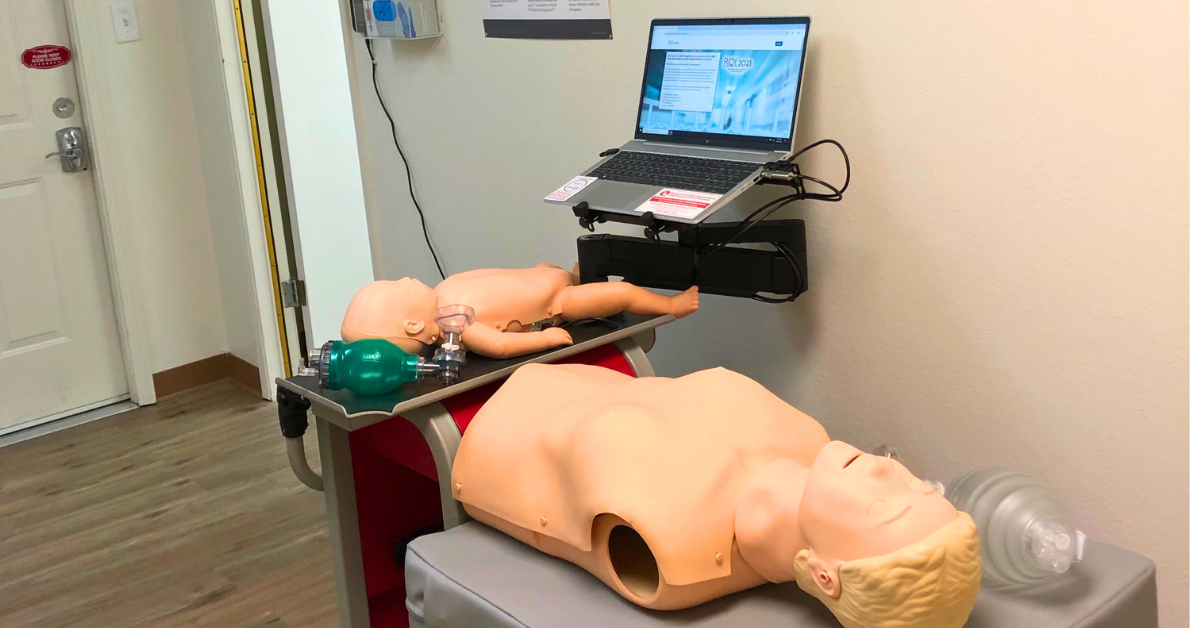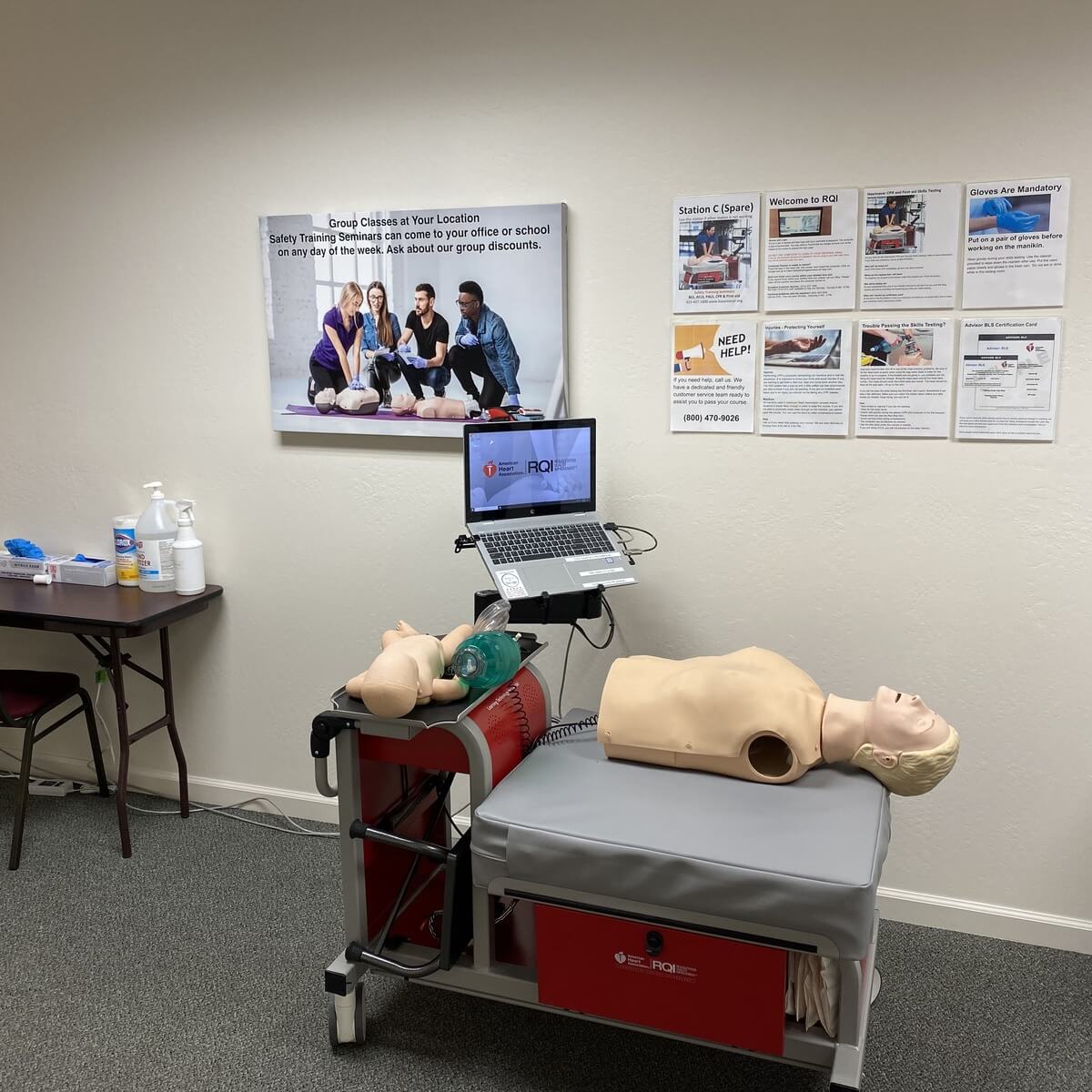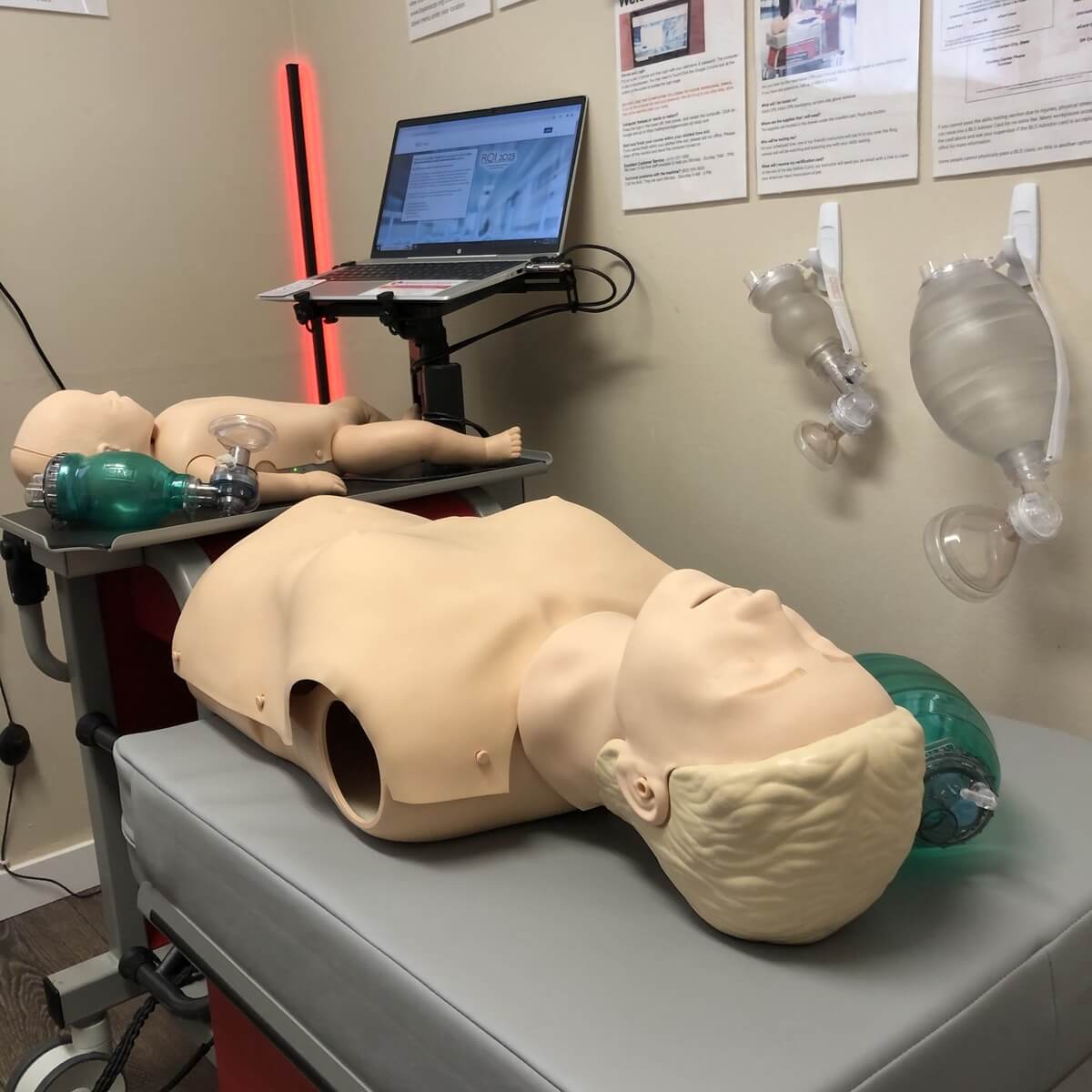Emergencies can happen anytime, anywhere. Would you know what to do if someone suddenly collapsed or stopped breathing? Basic Life Support (BLS) certification equips you with the skills to respond effectively in these critical situations. More than just CPR, BLS training covers a wider range of life-saving techniques, including using an AED and relieving choking. This guide will walk you through the essentials of BLS, why it’s crucial, and how to find aha bls courses nearby. We’ll also discuss the different types of BLS courses available, including online and in-person options, so you can choose the best fit for your needs.
Key Takeaways
- BLS certification provides essential life-saving skills: From CPR and AED use to relieving choking, BLS training equips you to handle various medical emergencies, increasing survival rates and promoting community safety.
- Finding the right BLS course is easy: Explore options like in-person, online, or blended learning to fit your schedule and preferences. Consider factors like instructor qualifications, reviews, and cost when choosing a provider.
- Staying current with BLS is an ongoing commitment: Renew your certification every two years and keep up with the latest AHA guidelines to ensure your skills remain sharp and aligned with best practices.
What is BLS? Why is it Important?
What is Basic Life Support (BLS)?
Basic Life Support (BLS) teaches CPR (cardiopulmonary resuscitation), how to use an automated external defibrillator (AED), and other emergency techniques for adults, children, and babies. It’s more comprehensive than just CPR training. Think of BLS as the next level, equipping you with a broader skill set to handle various life-threatening situations. BLS certification emphasizes early recognition and response to respiratory and cardiac arrest. You’ll learn how to provide high-quality chest compressions, deliver rescue breaths, and use an AED effectively. These skills are crucial for anyone working in healthcare or responding to emergencies. At Safety Training Seminars, our BLS certification courses cover all of these essential elements.
The AHA’s Role in BLS Training
The American Heart Association (AHA) sets the standard for BLS training and certification. They regularly update their guidelines based on the latest scientific research, ensuring that healthcare providers and first responders use the most effective techniques. These AHA Guidelines inform the content of all AHA-certified courses. When you choose an AHA-certified BLS course, like those offered at Safety Training Seminars, you’re learning evidence-based practices that can truly make a difference in a crisis. Our courses adhere to the latest AHA guidelines, giving you the confidence and skills to provide high-quality care. We offer a low price guarantee on all our courses.
Find AHA BLS Courses Near You
Finding the right Basic Life Support (BLS) class shouldn’t be a struggle. Whether you’re a healthcare provider, a student, or someone who wants to be prepared for emergencies, there are several ways to find American Heart Association (AHA) BLS courses near you.
Use the AHA’s “Find a Class” Tool
The AHA website offers a convenient “Find a Training Center” tool. This search feature lets you filter by location, course type (BLS), and even preferred training format (in-person, blended learning, etc.). It’s a quick way to see certified training centers in your area.
Explore Local Training Centers and Community Resources
Many hospitals, community colleges, and other organizations offer AHA BLS courses. Check with your local fire department, recreation centers, or even your workplace to see if they offer training or have recommendations. These local resources often cater to specific community needs and can be a great way to learn alongside your neighbors or colleagues. Consider contacting your local Red Cross chapter as well; they frequently offer BLS certification.
Safety Training Seminars: Your Trusted San Francisco Provider
If you’re in the San Francisco Bay Area, Safety Training Seminars provides AHA-certified BLS courses in convenient locations. We offer a low-price guarantee and pride ourselves on excellent customer service. Serving San Francisco, Daly City, San Mateo, and Oakland, we make high-quality BLS training accessible.
What to Expect in an AHA BLS Course
So, you’ve decided to get your BLS certification—great choice! Knowing what to expect can help you feel prepared and confident going into your training. Here’s a rundown of what a typical American Heart Association BLS course covers:
Course Structure and Duration
A BLS course blends classroom learning with hands-on practice. Most instructor-led courses take around 4.5 hours. Blended learning options (partially online) can vary in length. Expect small class sizes, usually a maximum of six students per instructor. This allows for personalized feedback and plenty of opportunities to ask questions. You can find more information about BLS course options directly from the American Heart Association.
Key BLS Topics
BLS courses cover the most up-to-date science and treatment recommendations for CPR and emergency cardiovascular care. You’ll learn the latest techniques for performing high-quality CPR for adults, children, and infants. The course also covers how to use an automated external defibrillator (AED) and how to relieve choking. These guidelines are based on the 2020 International Consensus on CPR and ECC.
Skills Assessment and Certification
To become certified, you’ll need to demonstrate your skills and knowledge. This involves a written exam and a skills test, where you’ll perform CPR and other life-saving techniques in a simulated scenario. You’ll need to score at least 84% on both to pass. After you’ve completed the course, you’ll receive your BLS certification, which is valid for two years. After that, you’ll need a renewal course, which typically takes about three hours.
Online vs. In-Person AHA BLS: Which is Right for You?
Choosing between online and in-person AHA BLS training depends on your learning style, schedule, and experience. Both formats offer the same certification, but the learning experience differs. Let’s weigh the pros and cons.
Pros and Cons of Each Format
Online BLS: The biggest advantage of online BLS training like HeartCode® BLS is flexibility. You learn at your own pace, anytime, anywhere. This self-directed approach uses adaptive learning technology, tailoring the content to your performance. However, all AHA BLS certifications require a hands-on skills assessment, even if you complete the coursework online. This means you’ll still need to schedule an in-person skills session. Some students have reported issues with the online platform’s animation quality and loading times. If you’re new to BLS, an in-person course is generally recommended for direct instruction and immediate feedback.
In-Person BLS: In-person courses offer a structured environment with direct interaction with an instructor. This format allows for hands-on practice, real-time feedback, and the opportunity to ask questions. The in-person AHA BLS course typically takes about 4.5 hours and includes a written and skills test, with an 84% score required to pass. While in-person training offers a more immersive experience, it requires a greater time commitment and may not fit everyone’s schedule. Safety Training Seminars offers AHA BLS certification courses in San Francisco with convenient daily classes.
Blended Learning Options
Blended learning combines online learning with the hands-on practice of in-person training. You complete the cognitive portion online at your own pace, then schedule a shorter in-person session to demonstrate your skills. The AHA offers various BLS course options, including blended learning, all based on the latest research and AHA guidelines. This approach can be a great option for those who prefer a flexible schedule but still value in-person instruction.
Who Needs AHA BLS Certification?
AHA Basic Life Support (BLS) certification equips people with the skills to respond to life-threatening emergencies. While healthcare providers frequently pursue this training, BLS certification benefits a much broader range of professions and individuals. Let’s explore who can benefit from this essential training.
Healthcare Professionals and Medical Students
BLS certification is often a prerequisite for many healthcare professions. Doctors, nurses, paramedics, medical assistants, and other healthcare providers are required to maintain valid BLS certification. This ensures they can deliver immediate and effective care during emergencies. Medical students also pursue BLS certification to build a strong foundation in life-saving techniques early in their careers. The American Heart Association (AHA) provides evidence-based guidelines and high-quality courses.
First Responders and Public Safety Personnel
Police officers, firefighters, EMTs, and other first responders are on the front lines of emergencies. BLS certification gives them the skills to administer CPR, use an AED, and provide other critical interventions. They can do this until more advanced medical help arrives. The AHA’s 2020 Guidelines for CPR and ECC reflect the latest science and treatment recommendations. This ensures that first responders have the most up-to-date knowledge and techniques. This training is essential for protecting public safety and improving outcomes in emergency situations.
Educators, Childcare Providers, and Other Essential Roles
Beyond healthcare and public safety, BLS certification is valuable for professionals who work with children or vulnerable populations. Teachers, childcare providers, camp counselors, lifeguards, and social workers can all benefit from BLS training. Knowing how to respond to emergencies like choking, cardiac arrest, or respiratory distress can be life-saving in these settings. The AHA offers various BLS course options, including blended learning and instructor-led formats. This makes it accessible to people with different schedules and learning preferences. This training empowers individuals to create safer environments for those in their care.
How Much Does AHA BLS Cost?
Getting your BLS certification is an investment in your skills and your community’s safety, so understanding the associated costs is important. Let’s break down the typical expenses.
Average BLS Certification Costs
The cost of Basic Life Support (BLS) certification through the American Heart Association (AHA) generally falls between $70 and $90. This price range can change depending on the training center and whether you choose an in-person or blended learning course. Safety Training Seminars offers competitive pricing and a low-price guarantee to ensure you receive high-quality training at a fair price. Remember, the investment in BLS training provides valuable skills and can even save lives.
Discounts and Savings
Looking to save on your BLS certification? Several options might be available. Check with your employer—some organizations cover the cost of BLS training for their employees. You can also explore the AHA website’s Find a Class tool to locate training centers near you that may offer discounts or promotions. Sometimes, bundling BLS certification with other courses like ACLS or PALS at Safety Training Seminars can also lead to cost savings. It’s always a good idea to inquire about potential discounts when you register.
Choose the Right AHA BLS Training Provider
Finding the right BLS training provider is just as important as the certification itself. Here’s what to consider when making your decision:
Evaluate Instructor Qualifications
Look for instructors with solid credentials and a passion for teaching. The best instructors are dedicated to following the latest American Heart Association guidelines, ensuring your training reflects current, evidence-based practices. A knowledgeable and engaging instructor can make all the difference in how well you absorb the material.
Consider Scheduling Options
Don’t let a busy schedule stop you from getting certified. Many providers offer various scheduling options, from weekend and evening classes to blended learning formats that combine online coursework with in-person skills sessions. Find a course that easily fits into your life and allows you to learn at your own pace.
Check Reviews and Testimonials
Reading reviews from past students gives you a glimpse into a training provider’s reputation. Look for providers with consistently positive feedback regarding instructor quality, course materials, and the overall learning experience. Reviews can offer valuable insights and help you choose a provider known for a positive and effective learning environment.
Maintain Your AHA BLS Certification
Once you’ve earned your BLS certification, staying current is key. Knowing the renewal process and keeping up with the latest guidelines ensures you’re always prepared to provide effective, high-quality care.
Renewal Process and Requirements
AHA BLS certification is valid for two years. To maintain your credentials, you’ll need to complete a renewal course before your current certification expires. Initial BLS courses typically run about 4.5 hours and include both a written exam and a skills test, requiring a score of 84% or higher to pass. Renewal courses are generally shorter, clocking in around three hours. Check with your chosen training center, like Safety Training Seminars, for specifics on course length and requirements.
Stay Updated on BLS Guidelines
The science behind resuscitation is constantly evolving. The American Heart Association (AHA) regularly updates its guidelines to reflect the latest research and best practices in CPR and emergency cardiovascular care. These guidelines, updated every five years, inform the content of AHA courses and many lifesaving protocols used in hospitals and by emergency responders. Staying informed about these updates is crucial for providing the most effective care. The 2020 AHA Guidelines for CPR and ECC, for example, represent a global consensus on resuscitation science and treatment recommendations. Staying current with these guidelines ensures your skills and knowledge remain aligned with best practices. Many providers, like Safety Training Seminars, incorporate these updates into their courses, making renewal a valuable opportunity to refresh your skills and learn the latest techniques.
AHA BLS Course Providers in the San Francisco Bay Area
Finding the right BLS course provider is key to receiving quality training. Here are a few options to explore in the San Francisco Bay Area:
Safety Training Seminars
Safety Training Seminars is a woman-owned business offering a range of AHA-certified courses, including BLS, ACLS, PALS, CPR, and First Aid. They focus on providing comprehensive, in-person training at competitive prices. Located in San Francisco, they conveniently serve students from surrounding areas like Daly City, San Mateo, and Oakland.
CPR Certification Institute
The CPR Certification Institute offers various CPR and BLS courses designed to meet AHA standards. They cater to both healthcare professionals and the general public, making them a versatile option for anyone seeking certification. Their focus is on delivering high-quality training, equipping students with the skills to respond effectively in emergencies.
ProCPR
If you’re a busy professional, ProCPR might be a good fit. They specialize in convenient online BLS certification courses, aligning with AHA guidelines. This format is particularly useful for healthcare providers renewing their certification.
National CPR Foundation
The National CPR Foundation provides a variety of CPR and BLS courses, including online options. Their courses align with AHA standards and offer flexible learning for those who prefer a self-paced approach.
American Red Cross
The American Red Cross is a well-established provider of BLS certification and renewal courses. They offer various training formats, including in-person and blended learning, catering to different learning styles. You can explore their BLS training options to find the best fit.
How AHA BLS Improves Individual and Community Safety
AHA Basic Life Support (BLS) certification goes beyond a simple credential—it represents a commitment to individual and community safety. BLS-trained individuals are equipped to respond effectively during medical emergencies, significantly impacting survival rates and fostering a more prepared and resilient community.
Learning BLS empowers individuals to act confidently during emergencies. Studies show that effective and prompt CPR is crucial after an out-of-hospital cardiac arrest. AHA BLS courses provide the knowledge and skills to perform high-quality CPR, increasing the chances of survival. This preparedness translates to safer homes, workplaces, and public spaces. Beyond CPR, BLS training covers other essential life-saving techniques, such as using an automated external defibrillator (AED) and relieving choking. These skills equip individuals to handle various medical emergencies.
The AHA plays a vital role in establishing and updating BLS guidelines based on the latest scientific research. By enrolling in an AHA BLS course, you gain access to evidence-based practices and the most current recommendations for emergency cardiovascular care. This ensures you receive high-quality training that aligns with international standards. Furthermore, AHA BLS courses emphasize the importance of ongoing practice and skill maintenance. Because BLS skills can decline without regular use, this emphasis on continued practice ensures that individuals remain prepared and capable of responding effectively in real-life emergencies.
AHA BLS training not only equips individuals with life-saving skills but also fosters a culture of preparedness within communities. When more people are trained in BLS, bystanders are more likely to intervene during medical emergencies, leading to faster response times and improved outcomes. This creates a ripple effect, empowering communities to take an active role in protecting their members. The confidence gained through BLS certification empowers individuals to act decisively in critical situations. Safety Training Seminars offers a range of AHA-certified courses, including BLS, to help you gain these vital skills.
Finding nearby training is key for those looking to stay current with CPR guidelines. Whether you’re located in the East Bay or the Sacramento area, options like BLS CPR Classes in Dublin and BLS CPR Classes in Carmichael offer convenient, AHA-certified instruction to help you meet job requirements or simply be prepared to save a life.
Frequently Asked Questions
How do I find an AHA BLS course near me? The AHA website has a “Find a Training Center” tool to search by location and course type. You can also check local hospitals, community colleges, and community centers, or contact your local Red Cross chapter. If you’re in the San Francisco Bay Area, Safety Training Seminars offers convenient AHA-certified BLS courses.
What’s the difference between online and in-person BLS training? Online BLS offers flexibility, allowing you to learn at your own pace. However, all AHA BLS certifications require an in-person skills assessment. In-person classes provide direct interaction with an instructor and hands-on practice, which is often better for those new to BLS. Blended learning combines online coursework with an in-person skills session.
Who should get BLS certified? BLS certification is essential for healthcare professionals, first responders, and anyone working with children or vulnerable populations. It’s also valuable for anyone who wants to be prepared for emergencies. While often a job requirement in healthcare, BLS skills benefit everyone.
How much does BLS certification cost, and are there ways to save? BLS certification typically costs between $70 and $90. Check with your employer, as some organizations cover the cost of training. Look for discounts or promotions from training centers, or consider bundling BLS with other courses like ACLS or PALS.
How do I maintain my BLS certification after I get it? AHA BLS certification is valid for two years. You’ll need to complete a renewal course before it expires. Stay updated on the latest AHA guidelines, as they are periodically revised to reflect the most current science and treatment recommendations. Training providers usually incorporate these updates into their renewal courses.


